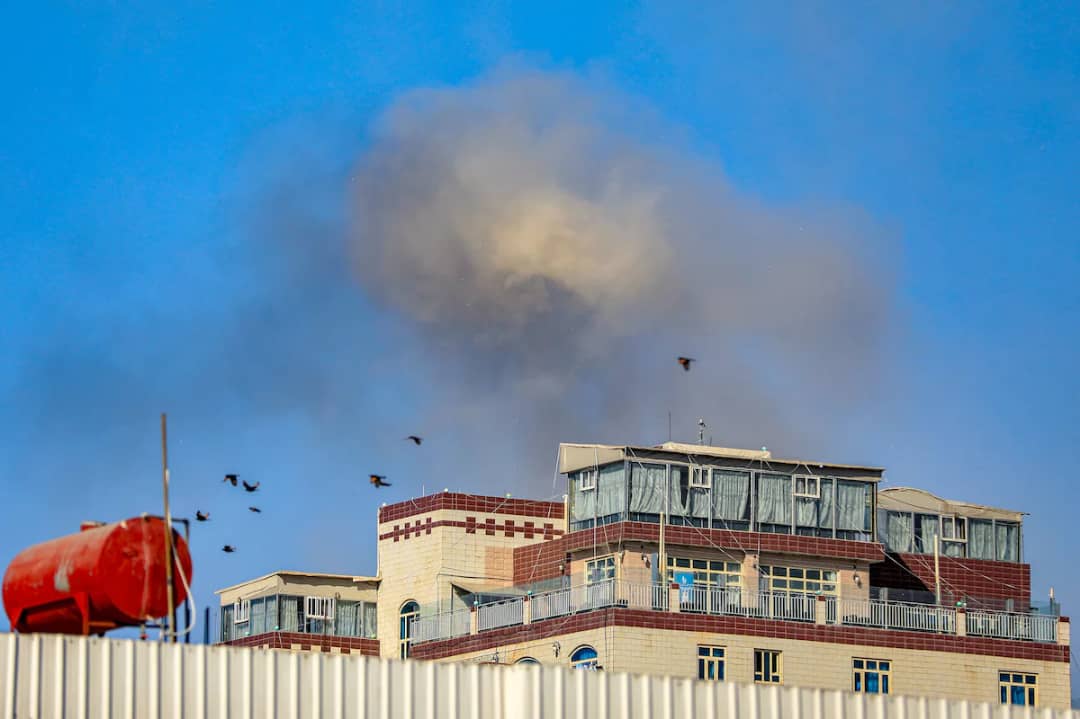By Burnett Munthali
The United States military has launched fresh airstrikes against Houthi-controlled sites in Yemen, continuing its aggressive campaign against the Iran-backed militant group. According to U.S. Central Command (Centcom), the airstrikes, carried out on Monday and Tuesday, targeted key Houthi facilities in the capital, Sanaa, and along Yemen’s coast. These included command and control facilities, missile storage, and drone production sites that have been used in Houthi operations against U.S. Navy warships and merchant vessels in the region.
The airstrikes are part of the broader U.S. effort to weaken the Houthi group’s ability to threaten regional security, especially in the Red Sea and Gulf of Aden, two crucial maritime corridors. “These facilities were used in Houthi operations, including attacks against U.S. Navy warships and merchant vessels,” Centcom stated. The airstrikes resulted in the destruction of Houthi coastal radar sites, along with several cruise missiles and one-way attack UAVs over the Red Sea.
The U.S. actions come amid a wider escalation in the Middle East, as Israel and its allies intensify their efforts against the Houthis. Israeli Prime Minister Benjamin Netanyahu recently stated that Israel’s fight against the group “is only getting started,” as the country continues to strike back at Houthi missile and drone attacks. In an attack on Thursday, Israeli forces hit the international airport in Sanaa, Yemen, just as World Health Organization (WHO) Director General Tedros Adhanom Ghebreyesus was preparing to board a flight.
Israel’s engagement with the Houthi group marks a significant shift. Once considered a less direct threat than Hamas or Hezbollah, the Houthis have become increasingly involved in broader regional hostilities, particularly following the Hamas-led assault on Israel on October 7, 2023. Since then, the Houthis have launched multiple missile and drone attacks, including strikes on Israeli cities. Though most of these missiles were intercepted, they have caused widespread disruption, with millions of Israelis forced into bomb shelters nearly every night.
The growing conflict has prompted international calls for restraint. U.N. Secretary-General António Guterres has urged both Israel and the Houthis to cease military actions, particularly after the Israeli strike on the Sanaa airport, which also threatened humanitarian efforts in the region.
In related developments, U.S. officials have met with Syrian authorities to discuss the political situation in Syria and to address the fate of U.S. citizens missing in the country. Meanwhile, the U.N. continues to highlight the dire humanitarian situation in Gaza, with reports indicating that 80% of households there have at least one child going without food.
The U.N. Security Council also convened to discuss the threats posed by Houthi militants, especially their increasing missile and drone attacks targeting Israel. Israeli Foreign Minister Gideon Saar has condemned these actions, urging countries to designate the group as a terrorist organization—a designation already made by the U.S. earlier this year.
The ongoing conflict in Yemen and the wider Middle East underscores the volatility of the region, with multiple actors involved in a complex web of military and political confrontations. As the U.S. and Israel ramp up their efforts against the Houthis, the potential for a protracted and escalating conflict remains high.




